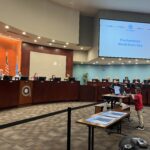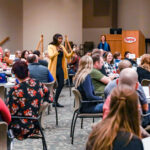The Paradigm Shift in Artistic Expression
Over time the arts—be it singing, dancing, or visual art—have shifted from being viewed as natural human behaviors to skills that are assessed for their level of proficiency. Talent shows, social media metrics, and even the formal education system now evaluate artistic abilities through stringent and specific criteria, which undermines the fundamental essence of art as an innate form of human expression. Unlike traditional societies where communal singing and dancing were regular public activities, the modern world seems to reserve these forms of expression for those deemed “talented” or “skilled.”
The Detrimental Effects of Skill-Centric Assessment
The outcome of this shift is multifaceted and, in many ways, detrimental to humanity’s well-being. One of the most significant consequences is a reduced willingness by average people to engage in artistic activities for fear of judgment or inadequacy. There is psychological research that suggests that the fear of judgment can inhibit creative expression and increase stress levels1 in the participant. Even the word “performer” has changed from the Old English meaning of “one who completes or accomplishes” to “a person who entertains an audience”. Additionally, people who perceive themselves as untalented are less likely to participate in artistic activities, missing out on the many cognitive and emotional benefits these activities offer2.
The Multifaceted Benefits of Artistic Engagement
Artistic pursuits hold immeasurable value beyond the building of a skill or public acknowledgment. They offer cognitive, emotional, and even physiological benefits. Studies indicate that engaging in art can improve mental health by reducing symptoms of stress and depression3. Art can be enjoyed as a process instead of an outcome which is closer to the activity of play than what we think of as performance. As well, artistic pursuits can enhance problem-solving skills by promoting divergent thinking and allowing individuals to approach issues from various angles4.
Art as a Tool for Problem-Solving
Even those who do not possess advanced skills in the arts can use these activities as a tool for problem-solving. Engagement in the arts stimulates the right hemisphere of the brain, which is associated with creativity, intuition, and holistic thinking5, allowing the participant to approach problems differently. The concept is rooted in the idea of “lateral thinking,” where indirect and creative approaches are applied to problem-solving6. In work scenarios, this could manifest as a business leader using principles of improvisational theater (“Yes… and”) to improve team dynamics and generate new ideas or an engineer sketching abstract concepts when attempting to design a complex machine.
The Human Essence of Artistic Behavior
It’s crucial to revert to a perspective that recognizes the arts as inherent aspects of being human, rather than skill sets to be measured and judged. Such a shift would not only help diversify ways in which people engage with art but also opens the door for the wide variety of benefits (cognitive, emotional, and problem-solving) that the arts can bring into our lives. By bridging the gap between skilled artists and casual participants, businesses and society in general can foster a more inclusive environment and encourage many more creative approaches to life’s challenges.
—
Footnotes
1: Kaufman, James C., and Beghetto, Ronald A. “Beyond Big and Little: The Four C Model of Creativity.” Review of General Psychology, vol. 13, no. 1, 2009, pp. 1-12.
2: Stuckey, Heather L., and Nobel, Jeremy. “The Connection Between Art, Healing, and Public Health: A Review of Current Literature. American Journal of Public Health, vol. 100, no. 2, 2010, pp. 254-263.
3: Fancourt, Daisy, et al. “The Art of Life and Death: 14-Year Follow-up Analyses of Associations Between Arts Engagement and Mortality in the English Longitudinal Study of Ageing.” BMJ, vol. 367, 2019.
4: Runco, Mark A. “Creativity: Theories and Themes: Research, Development, and Practice.” Elsevier, 2014.
5: Dietrich, Arne. “The cognitive neuroscience of creativity.” Psychonomic Bulletin & Review, vol. 11, no. 6, 2004, pp. 1011-1026.
6: De Bono, Edward. “Lateral Thinking: Creativity Step by Step.” Harper & Row, 1970.
Contact us for more information about our Prismatic Leadership Program and our other professional development courses.




